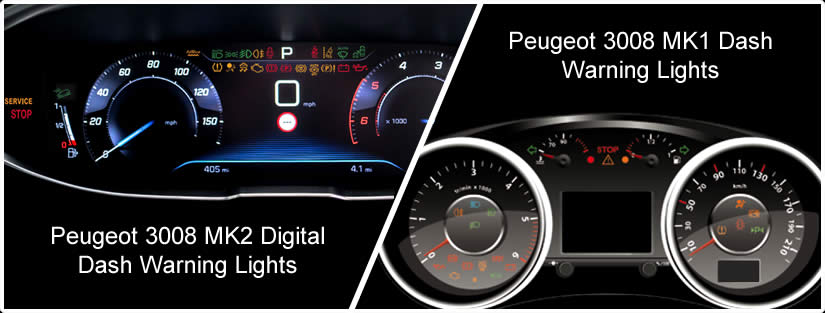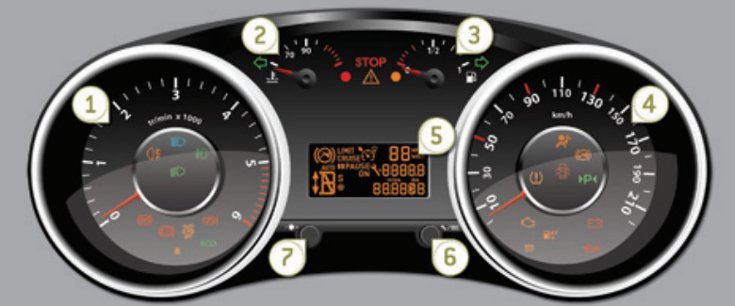Decoding the Peugeot 3008 Warning Lights: A Complete Guide
Your Peugeot 3008, a stylish and practical SUV, is a sophisticated machine. But like any modern vehicle, it communicates with you through a complex system of warning lights on the dashboard. These illuminated symbols are not just random flashes; they’re vital signals, alerting you to potential issues ranging from minor inconveniences to critical safety concerns. Understanding what these Peugeot 3008 warning lights mean is crucial for maintaining your vehicle’s health, preventing breakdowns, and ensuring your safety on the road. This comprehensive guide will help you decode the dashboard and take appropriate action.
Understanding the Peugeot 3008 Warning Light System
The warning lights in your Peugeot 3008 are designed to be easily understandable, employing a color-coded system to indicate the severity of the issue:
- Red Lights: These are the most critical. They signal a serious problem that requires immediate attention. Continuing to drive with a red warning light illuminated could lead to severe damage or safety risks.
- Orange/Yellow Lights: These indicate a less urgent problem, but one that still requires attention. You should address these issues as soon as possible to prevent them from escalating.
- Green/Blue Lights: These are informational lights, indicating that a system is active or functioning correctly, such as headlights or cruise control.
- White Lights: Usually indicate a system is active or a feature is engaged, often associated with driver assistance systems.
Common Peugeot 3008 Warning Lights and Their Meanings
Let’s break down some of the most common warning lights you might encounter in your Peugeot 3008. Remember to always consult your owner’s manual for the most accurate and detailed information specific to your model year.
Critical Warning Lights (Red)
- Brake System Warning Light ( ! in a circle): Indicates a problem with the braking system. This could be low brake fluid, a parking brake malfunction, or a more serious issue. Stop driving immediately and contact a qualified mechanic.
- Engine Oil Pressure Warning Light (Oil can): Signals low oil pressure. This could be due to a leak, low oil level, or a faulty oil pump. Stop driving immediately and check the oil level. If the light persists, contact a mechanic.
- Engine Coolant Temperature Warning Light (Thermometer in a liquid): Indicates the engine is overheating. Stop driving immediately and allow the engine to cool down. Check the coolant level when safe. Contact a mechanic if the problem persists.
- Charging System Warning Light (Battery Icon): Indicates a problem with the charging system, such as a faulty alternator or a discharged battery. Address this soon to prevent being stranded.
- Airbag Warning Light (Passenger with airbag): Signals a malfunction in the airbag system. Have this checked by a qualified technician immediately.
- Power Steering Warning Light (Steering wheel icon): Indicates a problem with the power steering system. This could make steering difficult. Get it checked by a mechanic as soon as possible.
Important Warning Lights (Orange/Yellow)
- Engine Management/Check Engine Light (Engine block icon): This is a general warning light that indicates a problem with the engine or its emissions system. Have a diagnostic check performed by a mechanic.
- Anti-lock Braking System (ABS) Warning Light (ABS letters in a circle): Signals a malfunction in the ABS system. While your brakes will still function, they will not have the anti-lock feature. Have the ABS system checked by a mechanic.
- Electronic Stability Program (ESP) Warning Light (Car with squiggly lines): Indicates a problem with the ESP system, which helps maintain vehicle stability. Have the ESP system checked by a mechanic.
- Tyre Pressure Monitoring System (TPMS) Warning Light (Exclamation point in a horseshoe): Indicates that one or more tires have low pressure. Check and inflate your tires to the recommended pressure.
- AdBlue® Warning Light (AdBlue® icon): Indicates a low AdBlue® level (for diesel models). Refill the AdBlue® tank as soon as possible.
- Service Indicator Light (Wrench icon): Indicates that your vehicle is due for scheduled maintenance. Schedule a service appointment.
- Automatic Gearbox Fault Light (Cogwheel): Indicates a problem with the automatic transmission. Have the transmission checked by a mechanic.
Informational/Status Lights (Green/Blue/White)
- Headlights On (Headlight icon): Indicates that the headlights are on.
- Front Fog Lights On (Fog light icon): Indicates that the front fog lights are on.
- Rear Fog Lights On (Rear fog light icon): Indicates that the rear fog lights are on.
- Direction Indicators/Turn Signals (Arrows): Indicate that the turn signals are active.
- High Beam Headlights On (Headlight with beams): Indicates that the high beam headlights are on.
- Cruise Control On (Speedometer with arrow): Indicates that the cruise control system is active.
- Lane Keeping Assist (Car between lines): Indicates that the lane keeping assist is active.
- Automatic High Beam (Headlight with A): Indicates that the automatic high beam system is active.
What to Do When a Warning Light Illuminates
- Identify the Light: Determine the exact symbol and its color.
- Consult Your Owner’s Manual: The manual provides detailed information about each warning light, its meaning, and recommended actions.
- Assess the Severity: Red lights require immediate attention. Orange/yellow lights should be addressed as soon as possible.
- Take Action: Follow the recommendations in your owner’s manual. This may involve checking fluid levels, contacting a mechanic, or pulling over safely.
- Don’t Ignore the Light: Ignoring warning lights can lead to more significant and costly repairs, and even compromise your safety.
Troubleshooting Tips
- Check Fluid Levels: Before panicking, check the oil, coolant, and brake fluid levels, especially if the corresponding warning lights are illuminated.
- Check the Fuel Cap: A loose or faulty fuel cap can sometimes trigger the check engine light. Tighten the cap and see if the light goes off after a few driving cycles.
- Restart the Engine: Sometimes, a temporary glitch can trigger a warning light. Try restarting the engine to see if the light disappears.
- Get a Diagnostic Check: If the light persists, take your Peugeot 3008 to a qualified mechanic for a diagnostic check. This will help identify the underlying cause of the problem.
Conclusion
Understanding the warning lights in your Peugeot 3008 is essential for responsible car ownership. By knowing what these symbols mean and taking appropriate action, you can protect your vehicle, ensure your safety, and avoid costly repairs. Remember to always prioritize safety and consult your owner’s manual for specific information related to your vehicle. Regular maintenance and prompt attention to warning lights will keep your Peugeot 3008 running smoothly for years to come.
FAQs
1. My check engine light is on. What should I do?
The check engine light can indicate a wide range of issues. The best course of action is to have a diagnostic check performed by a qualified mechanic to determine the cause.
2. What does it mean if multiple warning lights are illuminated?
Multiple warning lights can sometimes indicate a cascading issue. Prioritize the most critical lights (red) and address those first. Then, have your vehicle inspected by a mechanic to identify and resolve the underlying problems.
3. How do I reset a warning light?
Some warning lights, such as the TPMS light after tire inflation, may reset automatically. Others, like the service reminder, require a specific reset procedure, which can be found in your owner’s manual. Some lights require a diagnostic tool and reset by a mechanic.
4. Can I still drive my car if a warning light is on?
It depends on the warning light. Red lights generally mean you should stop driving immediately. Orange/yellow lights suggest you can continue driving, but you should address the issue as soon as possible. Always prioritize safety and consult your owner’s manual.
5. Where can I find more information about my Peugeot 3008 warning lights?
The most comprehensive source of information is your Peugeot 3008 owner’s manual. You can also consult online forums, Peugeot dealerships, and qualified mechanics for assistance.




